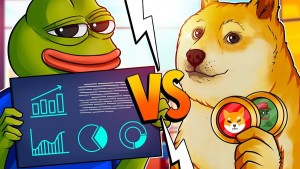Despite becoming somewhat of a buzzword in the blockchain space since mid-2021, blockchain gaming has been heralded as having the potential to finally make blockchain tech become something we all engage with, every day.
Offering up the potential for play-to-earn experiences, true player ownership of in-game items, and much more, early games like Axie Infinity and CryptoKitties have proven that blockchain gaming is incredibly lucrative for both players and developers.
But with the next generation of blockchain games, like The Sandbox, Star Atlas, and many more on the verge of release, it’s clear the space is poised to boom or bust.
With this in mind, perhaps it’s no surprise that many have turned their attention to blockchain gaming—both in the indie and AAA scene.
Giving NFTs Meaning
NFTs, or non-fungible tokens for those unfamiliar, absolutely exploded in 2021, even earning themselves the heralded place as Collins Dictionary’s word of the year. But for many NFTs have been a bubble waiting to pop for one simple reason; they can’t see the point.
Blockchain gaming is one-way NFTs can find a solid use case. Allowing players digital ownership over their in-game items. Giving them the power to truly own them, and trade them both within and outside any given network or game.
This makes grinding for high-end gear far more exciting for players who know they may turn a profit. While simultaneously giving imbuing items with an added flex potential, knowing particular items may be worth thousands of dollars.
Games like Gods Unchained, CryptoKitties, and Axie Infinity have done this by having players essentially play the game with their NFTs. But other games like The Sandbox hope to allow players to put their NFTs to work in creating experiences on virtual land which itself can become a passive income stream—given, after some heavy initial investments.
Altogether, by utilizing NFTs for tangible purposes, crypto gaming may not only stop the NFT bubble from bursting, but it may also secure its own success in doing so.
Faster More, Eco Friendly Chains
The argument against NFTs most often levied is that they are bad for the planet. While this holds water, as proof of work blockchains like Bitcoin and Ethereum do guzzle up unnecessary amounts of power, the statement is not fundamental to the concept of NFTs. In other words, it’s not NFTs that are bad for the environment, it’s the gas-guzzling networks they run on.
Fortunately, layer one blockchains—fundamental chains like Ethereum, Cardano and Solana on which applications are built—are turning towards a greener future. Many have already adopted the greener proof of stake consensus mechanism, while Ethereum—the largest hub for NFTs—is set to transition to proof of stake soon with the release of Ethereum 2.0.
Together, this bodes a brighter future for crypto gaming which could suffer heavily at the hands of regulators and eco-conscious companies who want to keep the world green.
Enter the Big Players
While some behemoth gaming companies, like Valve, have stated they want nothing to do with NFTs, the writing seems to be on the wall. Many gaming companies have used this as an excuse for diving head first into NFTs.
The most prominent AAA developer within the NFT space is perhaps Ubisoft, who have not only incorporated NFTs into their latest edition of the long-running Ghost Recon franchise but have also started collaborating with other blockchain gaming platforms such as The Sandbox. If you want to get your hands on some of gaming’s earliest NFTs be sure to get Ghost Recon Breakpoint from GameCamp, for the cheapest discounted game keys around.
Given, NFTs invading the world of traditional gaming has polarised many players. With some producing such an outcry that developers chose to remove NFTs from their upcoming titles—as is the case with the much-anticipated S.T.A.L.K.E.R. 2.
Thus, while it currently seems like the biggest players in video gaming are split between being for and against crypto gaming, one can be certain that if these early adopters prove successful other studios will quickly follow in their footsteps.
The Illusive Metaverse
The metaverse also looms large around crypto gaming with everyone seemingly wanting a piece of the pie. From Decentraland and The Sandbox to Alien Worlds and NetVrK, the concept of bringing together a space where people can create, play, socialise and earn money is slowly becoming a reality.
Huge players like Facebook—I mean Meta— and Microsoft also want to dive into the metaverse. With the latter conglomerate recently purchasing Activision Blizzard for $68.7 billion in the hope to “accelerate the growth of Microsoft’s gaming business across mobile, PC, console and cloud and provide building blocks for the metaverse.”
While none of us can be sure we will ever reach a true metaverse, or what that metaverse will look like, it’s clear that institutional adoption of blockchain technology—both inside and outside gaming—is accelerating the likelihood that crypto gaming will become a new norm.
The only question is, will that be this year, next year or even further in the future?





